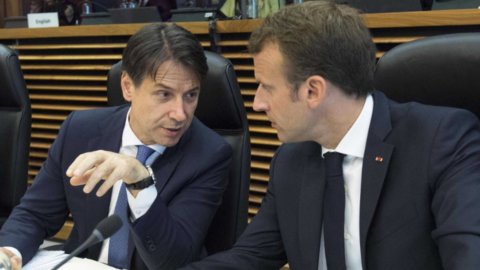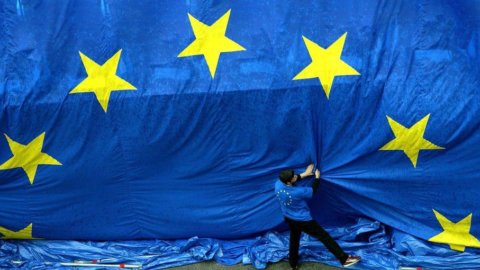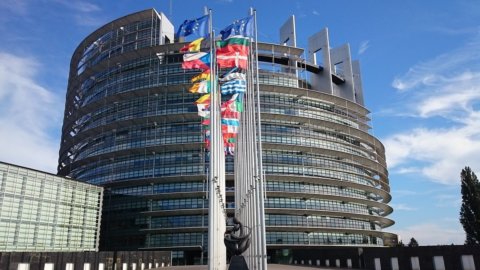Overcoming Dublin and the logic of first landing and passing the principle that whoever lands in Italy actually arrives in Europe, with the freedom to move between the various member countries. The Italian proposal for the management of migratory flows presented to EU summit on Sunday, which acts as a prologue to what will be the – probably decisive – Council meeting on Thursday 28 and Friday 29 June, is entitled "European multilevel strategy". Prime Minister Giuseppe Conte presented it during the press point that preceded the informal summit in Brussels, explaining how the proposal is based on "six premises" and has "ten objectives".
The Italian proposal aims at "a punctual flow regulation policy that is truly effective and sustainable and the total overcoming of the Dublin regulation, which we believe" linked "to an emergency framework", when instead we want a "structural" management, has explained Conte. “Italy in Europe is called to a crucial challenge. AND I guarantee you that it will be a radical change of approach on the subject,” the premier had already written on Twitter.
Here are the ten points of the Italian proposal:
1. Intensify agreements and relations between the European Union and third countries from which migrants leave or transit and invest in projects. For example, Libya and Niger, with whose help we reduced departures by 80% in 2018.
2. International Protection Centers in transit countries. To evaluate asylum requests and offer legal assistance to migrants, also for the purpose of voluntary returns. To this end, the EU must work with the UNHCR and the IOM. Therefore, it is urgent to refinance the EU-Africa Trust Fund (which currently has a total overdraft of 500 million euros) which also affects the fight against illegal immigration on the Libya-Niger border.
3. Strengthen external borders. Italy is already supporting EU missions (Eunavfor Med Sophia and Joint Operation Themis) and supporting the Libyan Coast Guard, these initiatives need to be strengthened.
4. Get over Dublin. Born for other purposes, it is now insufficient. Only 7% of migrants are refugees. Without taking adequate action, we risk losing the possibility of adopting a truly effective European instrument. The Common European Asylum System today is based on a paradox: rights are recognized only if people manage to reach Europe, it doesn't matter at what cost.
5. Pass the Country of First Arrival criterion. Whoever lands in Italy lands in Europe. Reaffirm responsibility-solidarity as a binomial, not as a dualism. Schenghen is at stake.
6. Common responsibility between Member States for shipwrecked persons at sea. Not everything can fall on the countries of first arrival. Overcoming the concept of 'illegal crossing' for people rescued at sea and brought ashore as a result of SARS. It is necessary to separate between the safe port of disembarkation and the state responsible for examining asylum requests. The rescue obligation cannot become the obligation to process applications on behalf of everyone.
7. The EU must fight human trafficking with common initiatives and not entrusted only to individual Member States and to fight the criminal organizations that fuel trafficking and the false illusions of migrants.
8. We can't take everyone to Italy or Spain. Reception centers are needed in several European countries to safeguard the rights of those arriving and avoid problems of public order and overcrowding.
9. Counteract secondary movements. Implementing the previous principles, the intra-European movements of refugees would be merely marginal. In this way the secondary movements will be able to become the object of technical agreements between the countries most interested. On this point, Italy complies with the requests of France and above all of Germany, where Chancellor Angela Merkel is cornered by the allied party CSU.
10. Each state establishes entry quotas for economic migrants. It is a principle that must be respected, but - the document concludes - "adequate financial countermeasures must be envisaged with respect to states that do not offer to welcome refugees".
[smiling_video id="58109″]
[/smiling_video]
“Conte's proposal? We will study it”, was the first reaction of the Spanish premier Pedro Sanchez.
However, in view of the European Council, Merkel he admitted that "there is still no solution at the community level, so it's about finding bilateral agreements, how we can help each other and treat each other fairly and honestly".
Along the same lines, the French president, Emmanuel Macron. “We have to find a European solution on migrants and it will only be built through the cooperation of EU countries, whether it's a collaboration of 28 or between several states that decide to move forward together. This requires the responsibility of each one and a spirit of solidarity to share the burden that some countries know".
[smiling_video id="57893″]
[/smiling_video]





